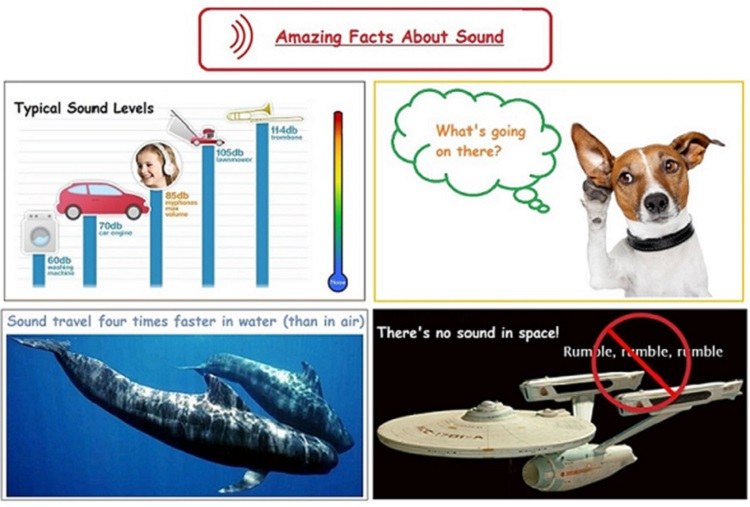
Listening to the radio or Television, playing music, shouting at each other – they all depend on the science of sound (and its called acoustics). We cannot see sound waves but we can hear them. They are ripples of high and low pressure in air. The peak (highest point) of the wave is where a region of air is squashed under high pressure. The trough (lowest point) of the wave is a region where air is expanded under low pressure.
Scientists measure the loudness or intensify of sound in decibels dB. The decibel scale measures the intensity, or energy in sound.
GET INSTANT HELP FROM EXPERTS!
- Looking for any kind of help on your academic work (essay, assignment, project)?
- Want us to review, proofread or tidy up your work?
- Want a helping hand so that you can focus on the more important tasks?
Hire us as project guide/assistant. Contact us for more information
A very quiet sound like a ticking watch is around 10 dB.
- Ordinary speech is around 50—60dB.
- Loud music is 90 dB.
- A jet plane taking off is 120 dB.
- Too much noise damages the ears.
Whether a sound is high or-low is called its pitch, or frequency. It is measured in Hertz, Hz.
- A singing bird or whining motorcycle has a high pitch.
- A rumble of thunder or a massive truck has a low pitch.
- People can hear frequencies from 25 to 20,000 Hz.
Unbelievable and amazing facts about sound, especially for school children.
- Sounds are like invisible waves in the air. Vibrating object generates sound waves.
- Loudness of sound is measured in decibels (dB). Whether a sound is high or low is called its pitch, or frequency (measured in Hertz, Hz)
- Certain animals, including dogs can hear sound at a higher frequency than humans, allowing them to hear noises that we can’t.
- Sound waves travel in air at speed of about 330 metres per second. This is fast, but is one million times slower than light waves.
- Sound travel four times faster in water (compared to air). The voice of a whale can travel up to 800 kilometers (479 miles) through the ocean waters!
- There’s no sound in space because sound cannot travel in vacuum, there are no particles that can carry the vibration.
- Sound waves also bounce off hard, flat surfaces. This is called reflection. The returning waves are heard as an echo.
- Loudspeakers change electric signals into sounds.
- Scientific study of sound waves is known as acoustics.
Loudspeakers change electrical Signals into sounds.
The signals in the wire pass through a wire coil inside the speaker. This turns the coil into a magnet, which pushes and pulls against another magnet.
The pushing and pulling make the cone vibrate, which sends sound waves into the air.
Sound waves spread out from a vibrating object that is moving rapidly to and fro.
Stretch an elastic band between your fingers and twang it. As it vibrates, it makes a sound. A similar thing happens when you speak. When you speak, vocal cords in your neck vibrate, which you can feel through your skin. (The vocal cords are tough flaps in your voicebox, in your neck).
StudyMumbai.com is an educational resource for students, parents, and teachers, with special focus on Mumbai. Our staff includes educators with several years of experience. Our mission is to simplify learning and to provide free education. Read more about us.

Leave a Reply
You must be logged in to post a comment.